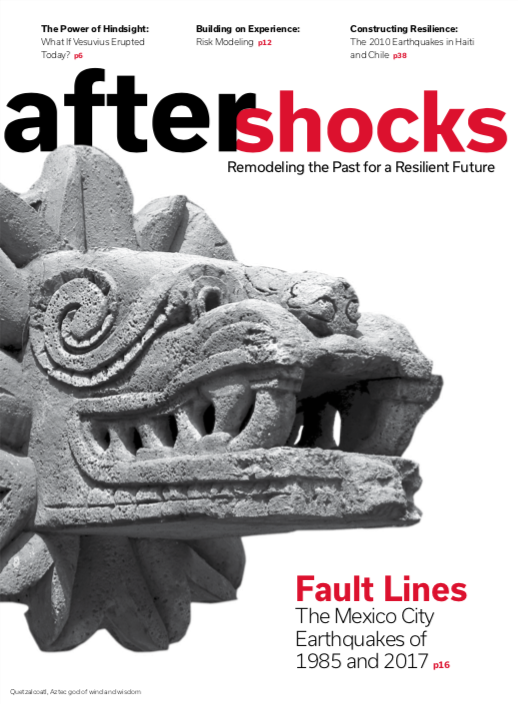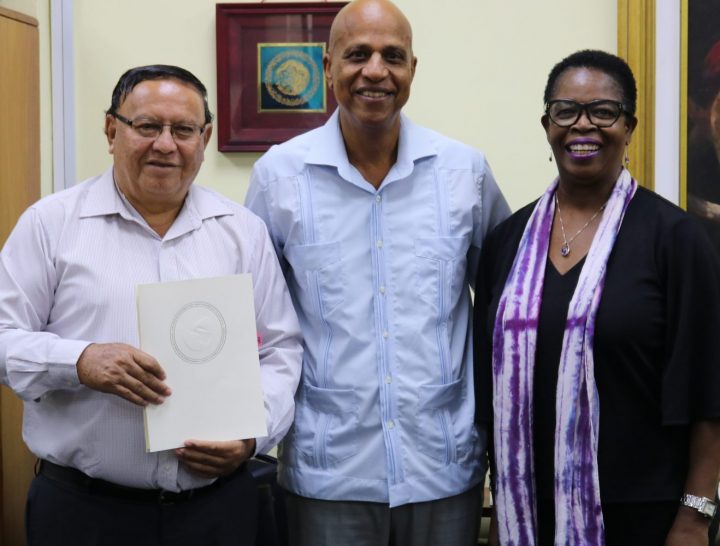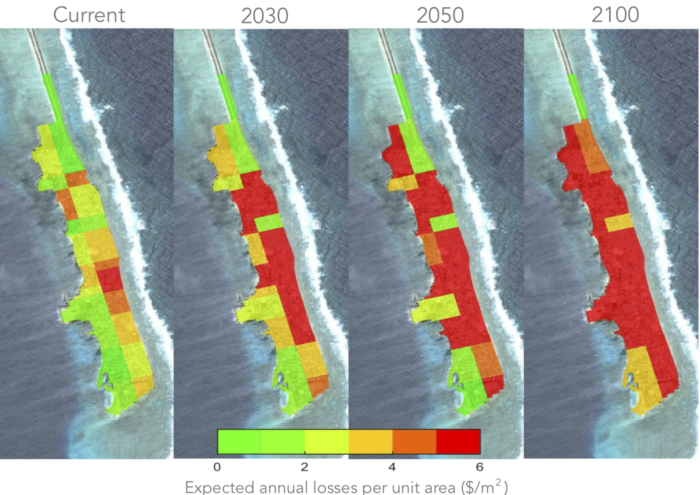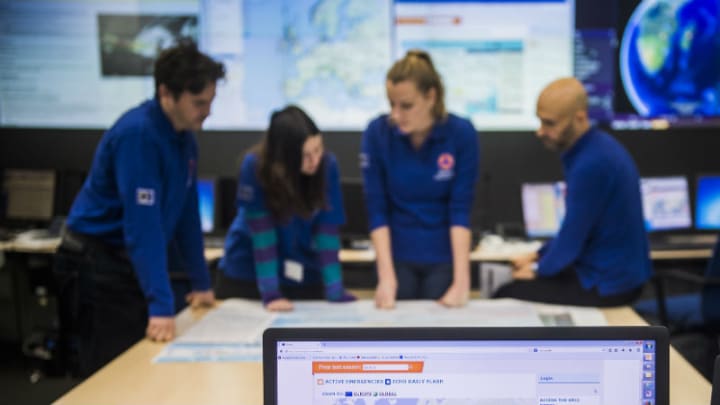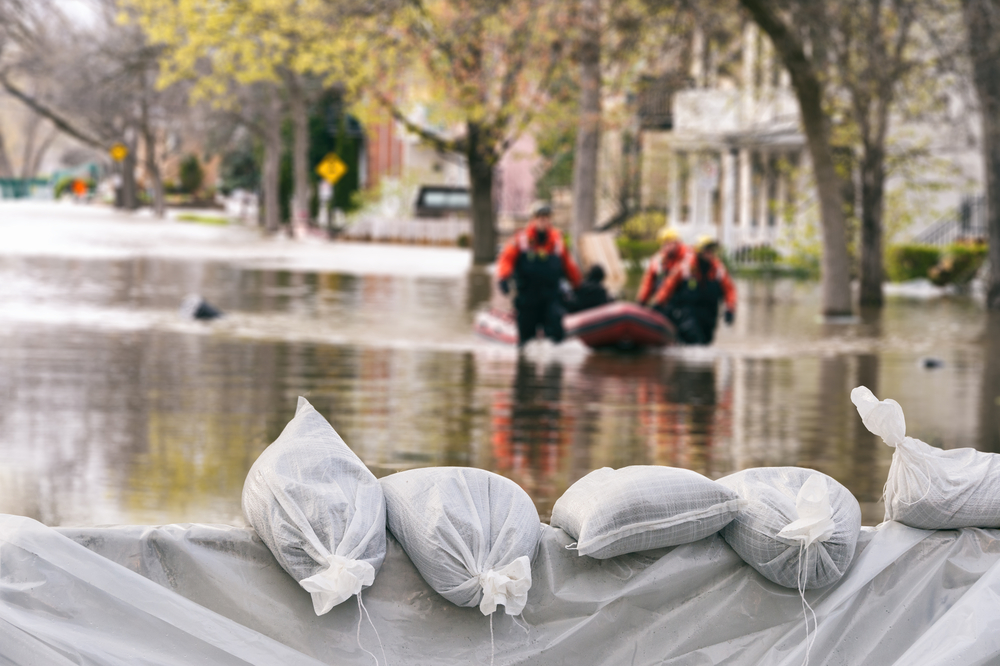Hidroituango dam failure in Central Colombia forces evacuation of thousands and leaves downriver communities at risk
On May 24th, the Colombia Civil Defense declared a red alert for the Pacific and Orinoquia Regions and an orange alert for the Caribbean, Andina, and part of the Pacific Regions due to heavy rain and an increase of the water level in several rivers. Media reported an overflow of the Cuanapi river in the city of Tumaco, Nariño Department, where at least 300 people were affected due to floods. Elsewhere, in the Municipality of Jamundi, Valle del Cauca Department, approximately 3,000 people were affected due to a strong cold wave and the villages of Jamundi and Valle were affected by 25 landslides...Read more Latest press release from the Colombia National Disaster Risk Management Unit(spanish)
Colombia's Ituango hydroelectric dam: threats, violence, and mismanagement
 A landslide at Colombia’s biggest dam that forced the evacuation of about 26,000 people highlights the risks to communities who have lived the area for generations, according to campaigners who have protested for years over the massive project. The $4 billion Ituango hydroelectric dam in northwestern Colombia has been dogged by protests since construction started in 2010 but was due to start generating power this year as part of a global push into clean renewable energy projects. But campaigners fear the Ituango dam will wreak havoc on the environment and destroy fishing and farming communities and they have been campaigning to stop the dam’s construction.
A landslide at Colombia’s biggest dam that forced the evacuation of about 26,000 people highlights the risks to communities who have lived the area for generations, according to campaigners who have protested for years over the massive project. The $4 billion Ituango hydroelectric dam in northwestern Colombia has been dogged by protests since construction started in 2010 but was due to start generating power this year as part of a global push into clean renewable energy projects. But campaigners fear the Ituango dam will wreak havoc on the environment and destroy fishing and farming communities and they have been campaigning to stop the dam’s construction.Following a trend of rising violence against environmental defenders across Latin America, on May 2, one of the local opponents to the dam was assassinated. Hugo Albeiro George Perez was a member of Movimiento Ríos Vivos in Colombia and one of the leaders of opposition to Ituango and associated mining projects in the region. Meanwhile, poor ecological management practices on the part of EPM caused major issues for the dam itself. Three landslides occurred between April 28th and May 7th that blocked the flow of water through an upstream diversion tunnel that was intended to keep the reservoir from filling to unsafe levels...Read more Read more
Interesting Facts
As Hawaii’s Kilauea erupts, volcanologists learn what warning signs may exist that point to future eruptions
 Weeks after it first erupted on May 3, Kilauea’s dramatic volcano activity continued to threaten homes, with lava and dangerous gases as it cracks apart at its base and blows periodically at its top to jettison lava and plumes of ash. Scientists are studying these oozing fissures, explosive eruptions and magma flow patterns as they happen, a rare opportunity for many of them who, without the real thing, are often left to model volcano behavior in distant laboratories. Where the volcano cracks into fissures, how the magma tracks through the ground and what warning signs may exist that point to future eruptions will be used to better plan and protect the state’s communities in the future. Scientists have noted chemical similarities between the lava emerging from the fissures here in what is known as the “lower east rift area” and the magma at Kilauea’s peak.
Weeks after it first erupted on May 3, Kilauea’s dramatic volcano activity continued to threaten homes, with lava and dangerous gases as it cracks apart at its base and blows periodically at its top to jettison lava and plumes of ash. Scientists are studying these oozing fissures, explosive eruptions and magma flow patterns as they happen, a rare opportunity for many of them who, without the real thing, are often left to model volcano behavior in distant laboratories. Where the volcano cracks into fissures, how the magma tracks through the ground and what warning signs may exist that point to future eruptions will be used to better plan and protect the state’s communities in the future. Scientists have noted chemical similarities between the lava emerging from the fissures here in what is known as the “lower east rift area” and the magma at Kilauea’s peak.Researchers are particularly interested in the observations of Kilauea’s steam-powered “phreatic” eruptions, which occur when hot rock interacts with water in the ground. If the volcano’s vent is blocked by falling rock, the resulting steam will build up pressure until it explodes. The warning signs for these events are poorly understood, said Maarten de Moor, a researcher at Costa Rica’s Volcanological and Seismological Observatory ... Read more
Hurricanes: Stronger, slower, wetter in the future? New analysis compares 22 named storms with possible hurricanes of the future

Scientists have developed a detailed analysis of how 22 recent hurricanes would be different if they formed under the conditions predicted for the late 21st century. While each storm's transformation would be unique, on balance, the hurricanes would become a little stronger, a little slower-moving, and a lot wetter.
In one example, Hurricane Ike -- which killed more than 100 people and devastated parts of the U.S. Gulf Coast in 2008 -- could have 13 percent stronger winds, move 17 percent slower, and be 34 percent wetter if it formed in a future, warmer climate. Other storms could become slightly weaker (for example, Hurricane Ernesto) or move slightly faster (such as Hurricane Gustav). None would become drier. The rainfall rate of simulated future storms would increase by an average of 24 percent.
The study, led by scientists at the National Center for Atmospheric Research (NCAR) and published in the Journal of Climate, compares high-resolution computer simulations of more than 20 historical, named Atlantic storms with a second set of simulations that are identical but for a warmer, wetter climate that's consistent with the average scientific projections for the end of the century.... Read more
Policy Developments and Outlook
Argentina, Brazil and Paraguay join to increase resilience of tri-border region
 South America’s tri-border region – where Argentina, Brazil and Paraguay meet – is highly exposed to extreme climate and weather events. It suffers from numerous vulnerabilities, including: poverty, economic and political instability, lack of resources and infrastructure. Now the unique ‘Triangle City Cooperation’ project has recommended that cities of this region must take precipitous action to reduce their climate change vulnerability and forge more climate-resilient development – to secure the region’s future. The project’s work has led directly to the formation of several tripartite initiatives among Argentina, Brazil and Paraguay, to shore up the region’s short- and long-term resilience.
South America’s tri-border region – where Argentina, Brazil and Paraguay meet – is highly exposed to extreme climate and weather events. It suffers from numerous vulnerabilities, including: poverty, economic and political instability, lack of resources and infrastructure. Now the unique ‘Triangle City Cooperation’ project has recommended that cities of this region must take precipitous action to reduce their climate change vulnerability and forge more climate-resilient development – to secure the region’s future. The project’s work has led directly to the formation of several tripartite initiatives among Argentina, Brazil and Paraguay, to shore up the region’s short- and long-term resilience.
Since the project’s inception in March 2017, the project has sought to to identify cooperation strategies among the three cities of Foz do Iguaçu (Brazil), Ciudad del Este (Paraguay) and Puerto Iguazú (Argentina): cities which meet at the confluence of borders – and of the major Parana and Iguazú Rivers. The project has been a joint effort among the University of Leeds (United Kingdom), the National University of Misiones (Argentina), the Instituto Internacional Polo Iguassu (Brazil) and the Catholic University of Our Lady of the Assumption (Paraguay). It has been supported by the Climate Resilient Cities in Latin America initiative of CDKN, Fundacion Futuro Latinoamericano and IDRC (Canada).
The research team analysed vulnerability and adaptation strategies in the tri-border region, in order to identify existing climate-related trends and problems in the cities... Read more Download the report Evaluación de la vulnerabilidad y estrategias de adaptación en la región trinacional (Spanish)
 South America’s tri-border region – where Argentina, Brazil and Paraguay meet – is highly exposed to extreme climate and weather events. It suffers from numerous vulnerabilities, including: poverty, economic and political instability, lack of resources and infrastructure. Now the unique ‘Triangle City Cooperation’ project has recommended that cities of this region must take precipitous action to reduce their climate change vulnerability and forge more climate-resilient development – to secure the region’s future. The project’s work has led directly to the formation of several tripartite initiatives among Argentina, Brazil and Paraguay, to shore up the region’s short- and long-term resilience.
South America’s tri-border region – where Argentina, Brazil and Paraguay meet – is highly exposed to extreme climate and weather events. It suffers from numerous vulnerabilities, including: poverty, economic and political instability, lack of resources and infrastructure. Now the unique ‘Triangle City Cooperation’ project has recommended that cities of this region must take precipitous action to reduce their climate change vulnerability and forge more climate-resilient development – to secure the region’s future. The project’s work has led directly to the formation of several tripartite initiatives among Argentina, Brazil and Paraguay, to shore up the region’s short- and long-term resilience.Since the project’s inception in March 2017, the project has sought to to identify cooperation strategies among the three cities of Foz do Iguaçu (Brazil), Ciudad del Este (Paraguay) and Puerto Iguazú (Argentina): cities which meet at the confluence of borders – and of the major Parana and Iguazú Rivers. The project has been a joint effort among the University of Leeds (United Kingdom), the National University of Misiones (Argentina), the Instituto Internacional Polo Iguassu (Brazil) and the Catholic University of Our Lady of the Assumption (Paraguay). It has been supported by the Climate Resilient Cities in Latin America initiative of CDKN, Fundacion Futuro Latinoamericano and IDRC (Canada).
The research team analysed vulnerability and adaptation strategies in the tri-border region, in order to identify existing climate-related trends and problems in the cities... Read more Download the report Evaluación de la vulnerabilidad y estrategias de adaptación en la región trinacional (Spanish)

